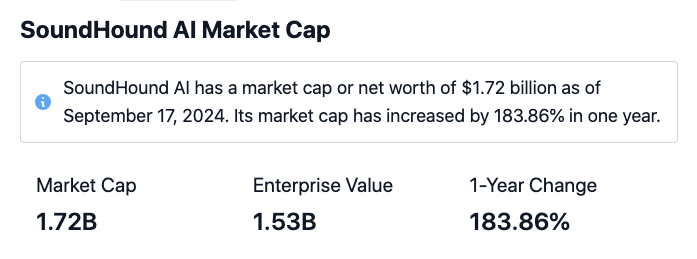20 Best Pieces Of Advice For Deciding On AI Stock Analysing Sites
20 Best Pieces Of Advice For Deciding On AI Stock Analysing Sites
Blog Article
Top 10 Tips For Evaluating The Security And Privacy Of Ai Trading Platforms That Predict Stocks Or Analyze Trades.
The security and privacy of trading platforms that are based on AI are important, since they handle personal and financial data. An attack or mishandled data can result in a significant financial loss as well as reputational damage. Here are 10 suggestions on how to evaluate the privacy and security options of these platforms.
1. Consider Data Encryption
Encryption in transit: Ensure your platform is using secure protocols (e.g., TLS/SSL) to protect data that is transmitted between your device and their servers.
Secure transport of data Verify that the sensitive information stored on a platform's servers has been encrypted with strong encryption standards, such as AES-256.
End-to-end encryption: Find out whether the platform supports end-to-end encryption to protect sensitive information or data.
2. Assess Authentication Measures
Double-factor authentication (copyright). Make sure the application you're using supports copyright. This adds another layer of security.
Check the biometric authentication options available for mobile applications (e.g. facial recognition, fingerprint).
Password policy: You should see if your platform enforces strict guidelines on passwords.
3. Verify if you are in Compliance
Financial regulations: Make sure that the platform complies with relevant financial laws (e.g., SEC, FINRA, MiFID II).
Data protection laws: Verify compliance with privacy laws (e.g. GDPR, GDPR, CCPA) if you are operating in or trading with areas covered by these laws.
Audit certifications: Determine whether the platform has passed third-party security audits or holds certificates (e.g., SOC 2, ISO 27001).
Review Controls for Access to Data
Role based access: Use role-based accessibility controls to limit access to data only to authentic users.
Verify whether you can create permissions with granular levels for different team members.
Activity monitoring: Make sure that the platform records and monitors user activity to identify any unusual behavior.
5. Assess Vulnerability and Management
Regular updates Make sure to update the software frequently to ensure it's always up-to-date.
Verify that your platform is regularly screened to penetration testing to identify security vulnerabilities and then fix these vulnerabilities.
Bug bounty programs: Verify whether there's a bug bounty program on the platform to encourage security researchers from the outside to share vulnerabilities.
6. Evaluate Data Privacy Policies
Transparency: Read the privacy guidelines on the website to learn the ways in which your information will be collected, used and shared.
Data minimization: Ensure that the platform only collects the information necessary for its function.
Third-party sharing: Find out whether your platform is sharing information with third parties and, if so, what are the conditions.
7. Secure API use can be monitored
API security: Make sure the platform's API utilizes secure authentication methods (e.g., OAuth, API keys) and secures data exchanges.
Rate limiting. Check the API's rate limiter to avoid abuse.
Look for access logs. The platform must log API use and access in order to audit and monitor.
8. Evaluate Incident Response and Recovery
Incident response plan - Make sure that your platform is armed with a plan of action to handle security breaches, data breaches, or other incidents.
Verify the platform's notification policy. Does it notify users immediately in the event of an incident?
Data backups: Make sure the platform regularly backups its data and that it has a disaster recovery plan.
9. Evaluation of Physical Security Measures
Data center Security: Ensure that servers are hosted in secure data centers with physical security measures in place (e.g. monitoring, access controls).
Redundancy - Make sure that the platform is armed with redundant systems in order to guarantee data availability even if hardware fails.
Geographic distribution: To enhance resilience, make sure the data is distributed to different places.
10. Test Privacy Controls for Users
Data deletion: Check that the platform permits you to permanently delete your personal information when you stop using the service.
Privacy settings: Ensure that your platform has privacy settings so you can control which data is available or shared.
Anonymization: Determine if data is anonymized to allow machine learning or analytics.
Bonus Tips
Reputation and feedback from users Read user reviews and feedback to assess the platform's record regarding security and privacy.
Free trial period: Test the privacy controls of the platform and security features using a demo.
Customer Support: Be sure that the platform provides solid support for problems or issues related to security.
You can test the privacy, security, as well as the accuracy of AI platforms for trading stocks by following these suggestions. This will ensure that your financial information as well as personal data are protected. A secure platform not just safeguards your assets but also builds confidence and trust in its offerings. Follow the recommended stock ai for blog tips including ai bot for copyright trading, ai for stock trading, best stocks to buy now, copyright ai bot, stock predictor, ai stock prediction, stock predictor, incite ai, best stocks to buy now, ai trading app and more.
Top 10 Tips For Assessing The Risk Management Of Ai Stock Prediction/Analyzing Platforms
A trading platform that uses AI to analyze and predict stocks should have a robust risk management system. This will safeguard your capital, and help reduce any possible losses. A platform with robust tools for risk management can help navigate the volatile market and enable you to make informed choices. Here are 10 guidelines on how you can evaluate the risk management capabilities of the platform.
1. Evaluation of Stop-Loss and Take-Profit Features
Customizable Levels: Make sure the platform allows you to define your own stop-loss levels as well as targets for take-profits in trades or strategies.
Find out if your platform supports trailing stops, which adjusts automatically as the market moves towards you.
If the platform offers stop-loss order guarantees that the position will be closed to the amount specified in markets that are volatile You can be assured that you will be able to trade successfully.
2. Assess Position Sizing Tools
Fixed amount. Be sure to have the option of defining your position sizes in terms of the fixed dollar amount.
Percentage in portfolio Manage your risk by setting the size of your portfolio proportionally in terms of per percentage.
Risk-reward: Make sure your platform permits you to define risk-rewards for each trade or strategy.
3. Check for Diversification Support
Multi-asset trading: Ensure your platform can handle trading across different asset classes (e.g. ETFs, stocks and forex) to diversify your portfolio.
Sector allocation: Determine if the platform offers tools to monitor and manage sector exposure.
Diversification of geographic areas. Verify whether the platform can trade on international markets and spread geographic risk.
4. Evaluate the Margin and Leverage Controls
Margin requirements: Ensure that the platform clearly outlines the margin requirements for trading leveraged.
Limits on leverage: Find out whether the platform permits users to set leverage limits to control risk exposure.
Margin calls: Check if the platform is able to provide prompt notifications of margin calls to avoid account liquidation.
5. Evaluation of Risk Analytics and Reporting
Risk metrics: Ensure whether the platform has important risk indicators like Value at Risk, Sharpe ratio and Drawdown, to help you manage your portfolio.
Scenario Analysis: Determine whether your platform has the capability to simulate different market scenarios in order to determine the potential risks.
Performance reports: Make sure you check whether the platform offers comprehensive performance reports, which include risk-adjusted returns.
6. Check for Real-Time Risk Monitoring
Portfolio monitoring - Ensure that the platform you choose has real-time monitoring in order to ensure your portfolio is protected.
Alerts and notifications: Check if the platform provides real-time alerts regarding risks-related events (e.g. margin breaches or Stop-loss triggers).
Make sure you have dashboards that can be customized to give you an overview of your risk profile.
7. Evaluation of Stress Testing and Backtesting
Stress testing - Ensure that your platform allows you stress test your portfolios and strategies in extreme market situations.
Backtesting - See the platform you use allows you to test strategies back using previous data. This is an excellent method to gauge the risk and evaluate the effectiveness of your strategy.
Monte Carlo simulators: Verify that the platform is using Monte Carlo to simulate a variety of possible outcomes so that you can assess risk.
8. Review Compliance Risk Management Regulations
Regulation compliance: Ensure that the platform complies with relevant regulation on risk management (e.g., MiFID II in Europe, Reg T in the U.S.).
Best execution: Check if the platform adheres to best execution practices, ensuring transactions are executed at the highest prices to avoid slippage.
Transparency - See if the platform discloses the risks in a clear and transparent manner.
9. Verify that the parameters are controlled by the user.
Custom risk rules: Ensure that the platform you choose allows you to create custom risk management rules.
Automated risk controls: Check to see whether your platform is able to enforce risk management rules based upon the parameters you've established.
Manual overrides Determine for the possibility of manually overriding the risk management system in an emergency.
Study Case Studies and User Feedback
User reviews: Read feedback from users and evaluate the effectiveness of the platform's risk management.
Case studies: Seek out cases studies or testimonials that highlight the risk management capabilities of the platform.
Community forums: Check if the platform has an active user community where traders share risk management tips and strategies.
Bonus Tips
Trial time: You may avail a demo or a free trial to try out the risk management tools available on the platform.
Customer support - Make sure that your platform provides a solid assistance for any questions or issues concerning risk.
Educational resources: Check whether the platform offers instructional resources or tutorials on risk management best practices.
Use these guidelines to evaluate the risk management abilities of AI trading platforms that predict/analyze the prices of stocks. Choose a platform with an excellent degree of risk management, and you will reduce your losses. To manage turbulent markets and attain long-term success in trading you require a reliable software for managing risk. View the best ai for investing blog for website advice including best copyright prediction site, free ai investing app, ai stock picker, ai stocks, copyright ai bot, trading with ai, best ai trading platform, ai stock picker, ai investment platform, ai stock and more.